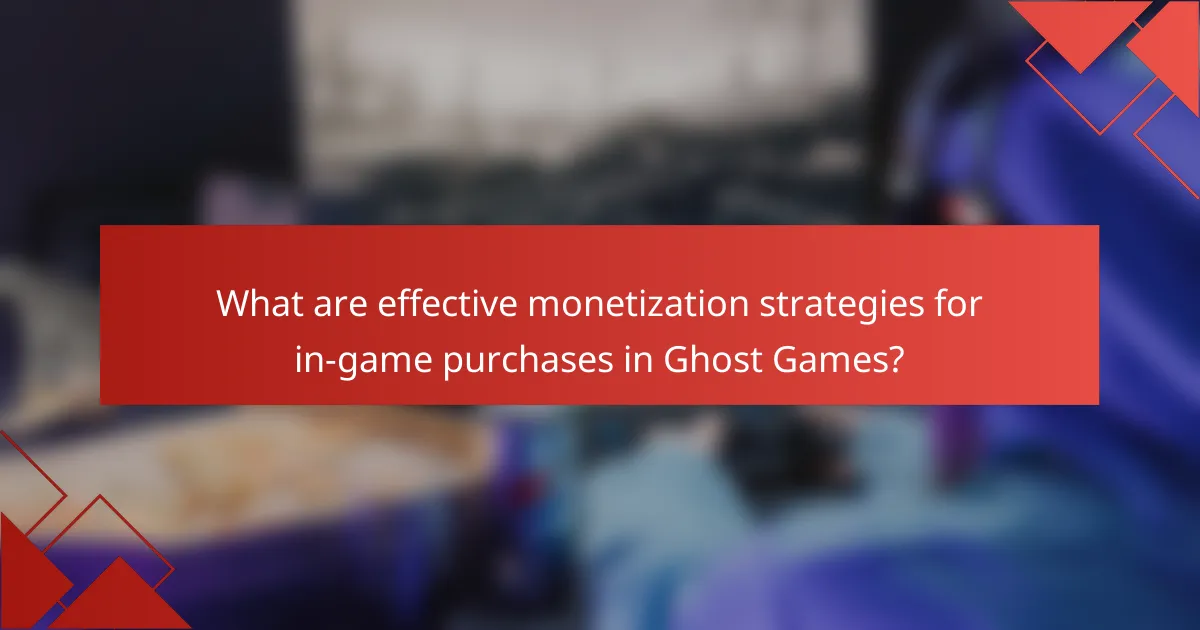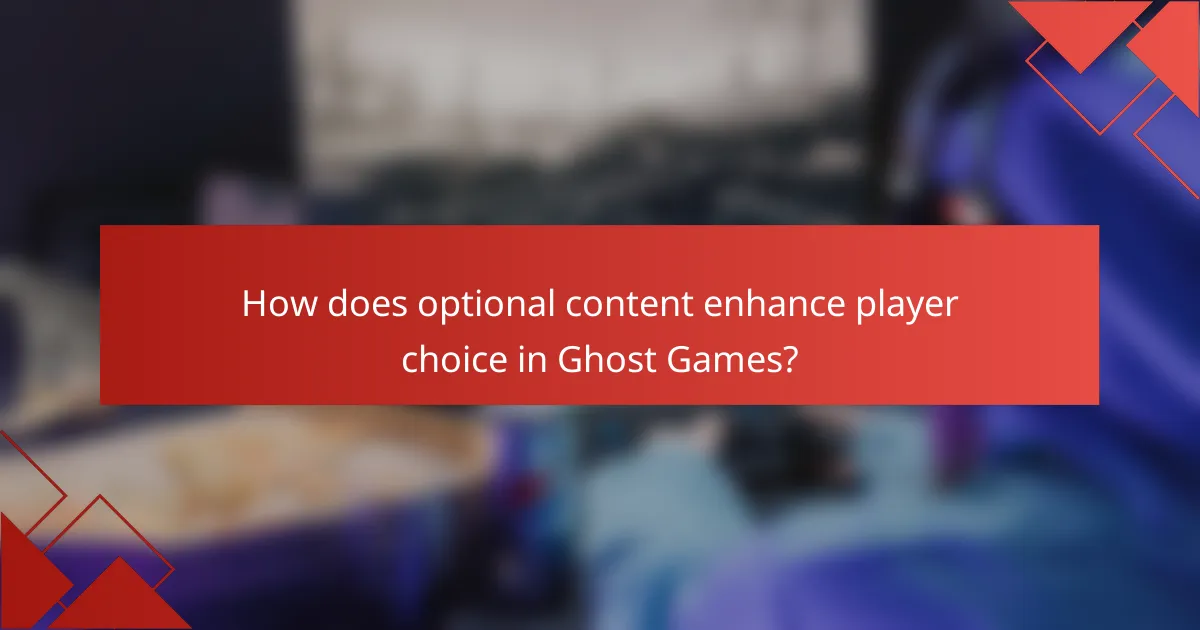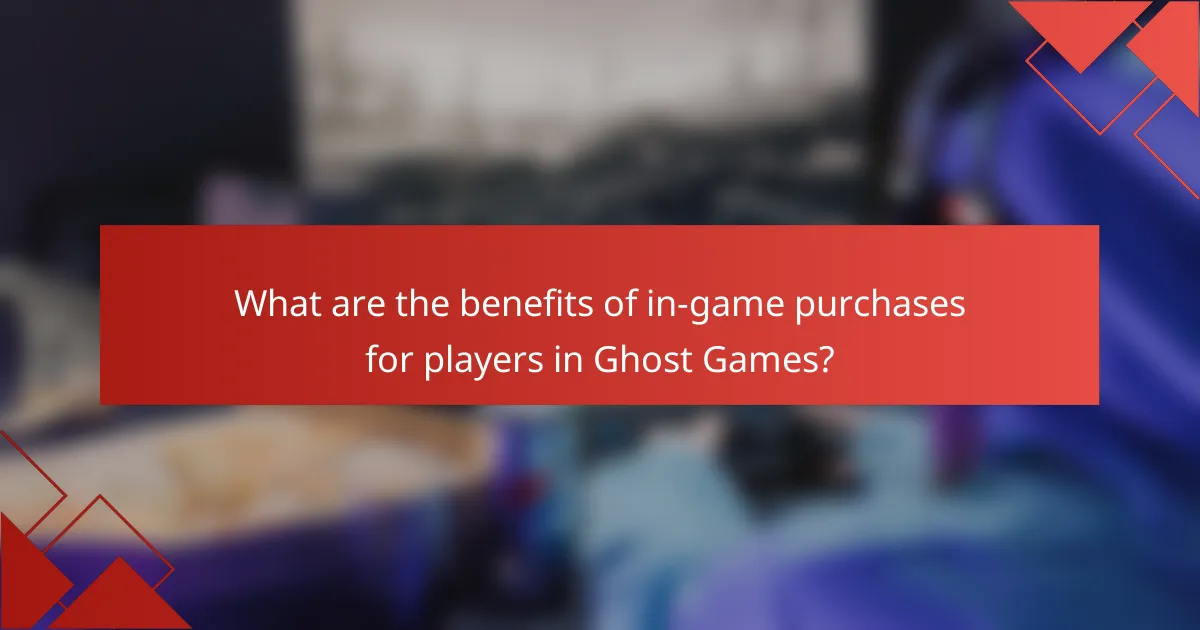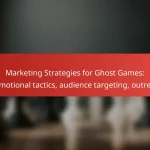In Ghost Games, effective monetization strategies for in-game purchases are designed to enhance player experience while offering optional content. By focusing on player choice, these strategies ensure that purchases feel rewarding and not mandatory, allowing for a more personalized and engaging gaming experience.

What are effective monetization strategies for in-game purchases in Ghost Games?
Effective monetization strategies for in-game purchases in Ghost Games focus on enhancing player experience while providing optional content. These strategies aim to balance profitability with player choice, ensuring that purchases feel rewarding rather than mandatory.
Freemium model
The freemium model allows players to access the game for free while offering optional in-game purchases. This strategy can attract a larger player base, as users can try the game without financial commitment. However, it’s essential to ensure that the free content is engaging enough to encourage players to consider making purchases.
Common items available in a freemium model include power-ups, additional levels, or exclusive characters. To maximize revenue, developers should monitor player engagement and adjust pricing strategies accordingly, ensuring that paid content feels valuable and enhances gameplay.
Subscription-based access
A subscription-based access model provides players with ongoing content and benefits for a recurring fee. This strategy can create a steady revenue stream while offering players a sense of belonging and exclusive perks. Subscriptions may include access to premium content, early releases, or special events.
When implementing subscriptions, developers should clearly communicate the value of the service to players. Offering a free trial period can help entice users to subscribe, allowing them to experience the benefits firsthand before committing financially.
Seasonal events and limited-time offers
Seasonal events and limited-time offers create urgency and excitement among players, encouraging them to make purchases. These events can introduce exclusive items, challenges, or experiences that are only available for a short period. This strategy can boost engagement and sales during specific times of the year.
To effectively implement this strategy, developers should plan events around holidays or significant game anniversaries. Promoting these events through in-game notifications and social media can help maximize visibility and participation.
Cosmetic upgrades
Cosmetic upgrades allow players to personalize their gaming experience without affecting gameplay balance. These upgrades can include skins, outfits, or visual effects that enhance the aesthetic appeal of characters or environments. Since these items do not impact game mechanics, they can be a popular choice among players.
Offering a variety of cosmetic options at different price points can cater to a wider audience. Regularly updating the available cosmetics can keep the content fresh and encourage players to return to the game for new purchases.
Player-driven economy
A player-driven economy allows users to trade or sell in-game items among themselves, creating a dynamic marketplace. This strategy can enhance player engagement and investment in the game, as players feel a sense of ownership over their items. Implementing a secure trading system is crucial to prevent fraud and maintain trust within the community.
Developers should consider setting guidelines for trades and transactions to ensure fairness. Monitoring the economy can help identify trends and adjust item availability or pricing to maintain balance and player satisfaction.

How does optional content enhance player choice in Ghost Games?
Optional content in Ghost Games significantly enhances player choice by allowing individuals to personalize their gaming experience. Players can select from various enhancements and features that align with their preferences, making the game more engaging and tailored to their style.
Customizable avatars
Customizable avatars provide players with the opportunity to express their individuality within the game. Players can choose different outfits, accessories, and physical features, which can create a more immersive experience. This personalization fosters a sense of ownership and connection to the game.
When customizing avatars, consider the balance between aesthetics and functionality. Some items may enhance gameplay, while others are purely cosmetic. Players should prioritize features that align with their gameplay strategy while also enjoying the visual appeal.
Exclusive missions and challenges
Exclusive missions and challenges offer players unique gameplay experiences that are not available to everyone. These optional tasks can provide additional rewards, such as rare items or in-game currency, motivating players to engage more deeply with the game. Completing these challenges can also enhance the overall narrative experience.
Players should evaluate the time investment required for these exclusive missions. Some may offer substantial rewards for minimal effort, while others might demand significant time without proportional benefits. It’s advisable to focus on missions that align with personal goals or provide desirable rewards.

What are the benefits of in-game purchases for players in Ghost Games?
In-game purchases in Ghost Games offer players enhanced experiences, exclusive content, and time-saving options. These purchases allow players to tailor their gameplay and enjoy additional features that can significantly improve their overall enjoyment.
Enhanced gameplay experience
In-game purchases can enhance the gameplay experience by providing players with new features, upgrades, and customization options. For instance, players might buy special skins, weapons, or abilities that not only improve aesthetics but also impact gameplay dynamics.
These enhancements can lead to a more immersive and enjoyable experience, as players can express their individuality and engage more deeply with the game world. However, it’s essential to consider whether these purchases genuinely add value or if they merely serve as a distraction from core gameplay.
Access to exclusive content
Many in-game purchases grant access to exclusive content that is not available through regular gameplay. This could include special missions, characters, or items that enrich the overall game narrative and provide unique challenges.
Players who invest in these purchases often find themselves with a richer gaming experience, as they can explore aspects of the game that others may miss. However, it’s crucial to weigh the cost against the enjoyment derived from this exclusive content to ensure it aligns with personal gaming goals.
Time-saving options
In-game purchases can also offer time-saving options for players looking to progress more quickly. For example, players might buy resources or boosts that accelerate leveling up or unlock features that would typically require significant time investment.
While these options can be appealing, players should be cautious about relying too heavily on them, as it may detract from the satisfaction of earning achievements through gameplay. Balancing time-saving purchases with traditional play can help maintain a fulfilling gaming experience.

What criteria should developers consider for in-game purchase implementation?
Developers should consider player experience, monetization goals, and market expectations when implementing in-game purchases. Balancing these factors ensures that purchases enhance gameplay without alienating players.
Player engagement metrics
Understanding player engagement metrics is crucial for effective in-game purchase strategies. Metrics such as daily active users (DAU), session length, and retention rates help identify how players interact with the game and what content they value. For example, if a game sees high retention but low spending, it may indicate a need for more appealing purchase options.
Developers should track how often players engage with purchasable content and adjust offerings accordingly. Regularly analyzing these metrics can reveal trends and inform decisions on pricing, discounts, or new content types that could boost player spending.
Market trends analysis
Analyzing market trends helps developers align their in-game purchase strategies with current player preferences and industry standards. Keeping an eye on popular genres, successful monetization models, and competitor offerings can provide insights into what players are willing to spend on. For instance, free-to-play models with cosmetic purchases have gained traction, indicating a shift in player spending habits.
Developers should also consider regional differences in spending behavior. For example, players in North America may be more accustomed to subscription models, while those in Europe might prefer one-time purchases. Adapting strategies to fit these trends can enhance revenue potential and player satisfaction.

How do player demographics influence in-game purchase strategies?
Player demographics significantly shape in-game purchase strategies by determining what types of content resonate with different groups. Understanding age, geographic location, and spending habits allows developers to tailor their monetization approaches effectively.
Age group preferences
Different age groups exhibit distinct preferences for in-game purchases. Younger players, often in their teens and early twenties, may favor cosmetic items and microtransactions that enhance their gaming experience without affecting gameplay. In contrast, older players might be more inclined to spend on expansions or premium content that offers substantial gameplay enhancements.
For example, players aged 18-24 might spend more on character skins or emotes, while those aged 30 and above may prioritize purchasing full game expansions or season passes. Understanding these preferences can help developers create targeted marketing campaigns.
Geographic spending habits
Geographic location plays a crucial role in shaping spending habits for in-game purchases. Players in North America and Western Europe generally have higher disposable incomes and are more willing to spend on in-game content compared to players in regions with lower average incomes.
For instance, players in the United States may spend significantly more on microtransactions than those in Eastern Europe, where the average spending on in-game purchases can be much lower. Developers should consider local economic conditions and cultural attitudes towards gaming to optimize their pricing strategies and content offerings.


